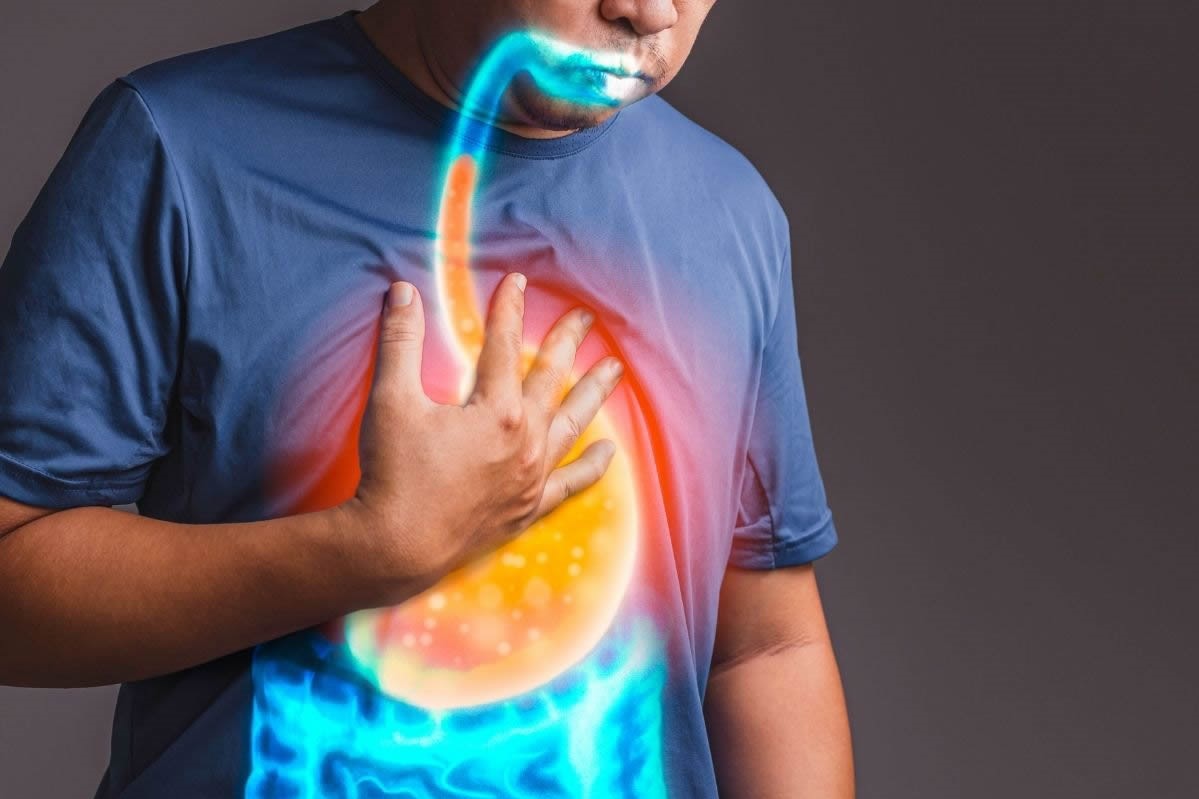
Barrett's Esophagus: Definition, Causes, Symptoms, Diagnosis, and Treatment
Barrett’s esophagus means that some cells in the lining of the food pipe have started to change. In a small number of people these cells can develop into cancer of the esophagus over a long period of time
What is Barrett’s esophagus?
The cells lining the food pipe are normally flat.
They are called squamous cells.
In Barrett’s esophagus, they change into a type more like columnar (column-shaped) cells in the lining of the small and large intestine.
Cells can grow abnormally.
Doctors call this dysplasia.
Dysplasia can be low-grade or high-grade.
The grade indicates the abnormal appearance of the cells under a microscope.
The more abnormal they look, the higher the grade.
What is the risk of developing esophageal cancer?
Barrett’s esophagus can increase the risk of cancer of the esophagus, although the risk is still low.
Many people with Barrett’s esophagus do not develop cancer.
Between 3 and 13 out of 100 people (between 3 and 13%) with Barrett’s esophagus will develop esophageal adenocarcinoma in their lifetime.
And each year, fewer than 1 in 100 people with Barrett’s (less than 1%) develop esophageal adenocarcinoma.
Your risk of developing esophageal cancer is higher if you have more severe cell changes (high-grade dysplasia).
Risks and causes
Barrett’s esophagus is more common in men than in women.
And it is also more common in older people.
Other risk factors include:
- have a history of acid reflux symptoms
- being overweight and the fat is mostly around the waist (abdominal obesity)
- Many people with Barrett’s esophagus have no symptoms at all
- Doctors can find the changes in your cells when you have tests for something else.
Indigestion and long-term heartburn are the most common symptoms.
Many people have indigestion and heartburn and it usually doesn’t mean anything is wrong.
But see your GP for a check if you have indigestion most days for 3 weeks or more or if it is getting worse.
You may also have difficulty swallowing food.
Or food may come back up from the stomach into the food pipe, but this is less common.
Your doctor will send you for an endoscopy if he thinks you might have Barrett’s esophagus
This test looks inside the food pipe to find any changes.
Use a long hose with a light on the end.
Treatment
Some treatments aim to control symptoms and reduce the risk of abnormal cells turning into cancer.
They lower the amount of acid produced by the stomach.
Other treatments remove or treat damaged areas in the lining of the food pipe.
What is the treatment for Barrett’s esophagus?
The management of Barrett’s esophagus depends on your situation.
Management options include:
- monitor your condition – this is called surveillance
- medicines to stop stomach acid
- surgery to strengthen the food pipe valve
- removing the affected area through an endoscope – this is called endoscopic mucosal resection (EMR)
- destroy the affected area by radiofrequency ablation (RFA)
- surgery to remove the area containing the affected cells
- other treatments to destroy the abnormal cells, such as light therapy (photodynamic therapy) or freezing treatment (cryotherapy)
Monitor your Barrett
You will need to see your specialist doctor regularly if you have Barrett’s esophagus.
You’ll also have regular tests called endoscopy to look inside your food pipe.
This checks if abnormal cells are developing.
It can also detect esophageal cancer early when treatment is usually successful.
The frequency of endoscopy depends on your condition and whether it is changing.
Your specialist doctor will tell you more about this.
Medicines to stop stomach acid
These medications aim to control the symptoms of indigestion and heartburn.
They include drugs called proton pump inhibitors such as omeprazole tablets.
You may need to continue taking these tablets as long as your symptoms are controlled.
But you may be able to reduce the dose after a while.
Strengthen the food pipe valve
A surgeon can sometimes tighten the valve at the lower end of the esophagus.
This operation is called a fundoplication.
It prevents stomach acid from going back up into the esophagus and reduces indigestion and heartburn.
An operation to remove abnormal cells
Your doctor may remove abnormal areas or growths from the lining of your food pipe or stomach.
They use a thin wire called a tourniquet passed down through the endoscope to remove the inner lining of the esophagus.
This operation is called endoscopic mucosal resection, or EMR.
Doctors use a long, flexible tube (endoscope) with a tiny camera and light on the end to look inside the esophagus.
They then remove the abnormal area by passing special tools through the tube.
Read Also
Emergency Live Even More…Live: Download The New Free App Of Your Newspaper For IOS And Android
Barrett’s Oesophagus: Early Diagnosis And Treatment
What Is Zollinger-Ellison Syndrome? Definition, Causes, Symptoms, Diagnosis And Treatment
Gastritis: Causes, Symptoms, Diagnosis And Treatment
Gastro-Oesophageal Reflux: Symptoms, Diagnosis And Treatment
Heartburn: Symptoms, Causes And Treatment
Straight Leg Raise: The New Manoeuvre To Diagnose Gastro-Oesophageal Reflux Disease
Gastroenterology: Endoscopic Treatment For Gastro-Oesophageal Reflux
Oesophagitis: Symptoms, Diagnosis And Treatment
Asthma, The Disease That Takes Your Breath Away
Gastroesophageal Reflux: Causes, Symptoms, Tests For Diagnosis And Treatment
Global Strategy For Asthma Management And Prevention
Paediatrics: ‘Asthma May Have ‘Protective’ Action Against Covid’
Esophageal Achalasia, The Treatment Is Endoscopic
Oesophageal Achalasia: Symptoms And How To Treat It
Eosinophilic Oesophagitis: What It Is, What The Symptoms Are And How To Treat It
Gastroesophageal Reflux: Causes, Symptoms, Tests For Diagnosis And Treatment
Irritable Bowel Syndrome (IBS): A Benign Condition To Keep Under Control
Long Covid, Study In Neurogastroenterology And Motility: Main Symptoms Are Diarrhoea And Asthenia
Symptoms And Remedies Of A Gastro-Oesophageal Reflux Cough
Gastro-Oesophageal Reflux Disease (GERD): Symptoms, Diagnosis And Treatment
Gastro-Oesophageal Reflux: Causes And Remedies


